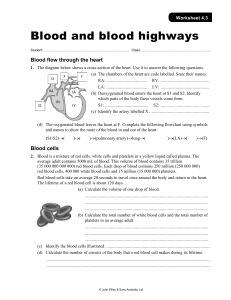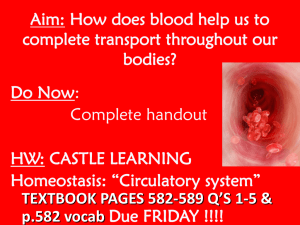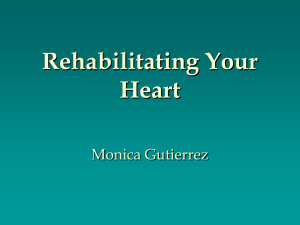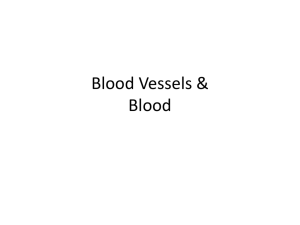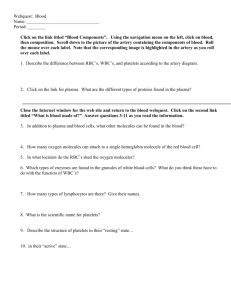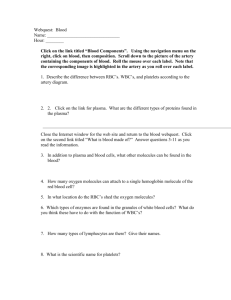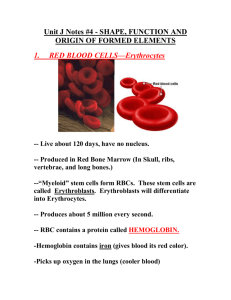Circulation Study Guide - Stephanie Dietterle Webpage
advertisement
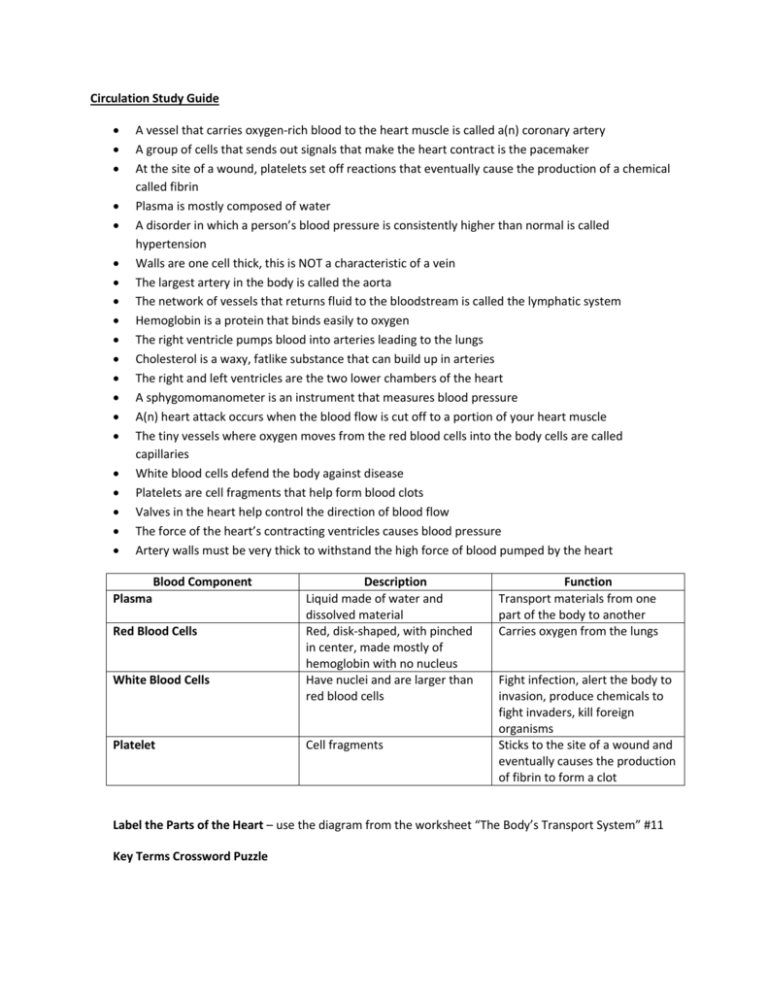
Circulation Study Guide A vessel that carries oxygen-rich blood to the heart muscle is called a(n) coronary artery A group of cells that sends out signals that make the heart contract is the pacemaker At the site of a wound, platelets set off reactions that eventually cause the production of a chemical called fibrin Plasma is mostly composed of water A disorder in which a person’s blood pressure is consistently higher than normal is called hypertension Walls are one cell thick, this is NOT a characteristic of a vein The largest artery in the body is called the aorta The network of vessels that returns fluid to the bloodstream is called the lymphatic system Hemoglobin is a protein that binds easily to oxygen The right ventricle pumps blood into arteries leading to the lungs Cholesterol is a waxy, fatlike substance that can build up in arteries The right and left ventricles are the two lower chambers of the heart A sphygomomanometer is an instrument that measures blood pressure A(n) heart attack occurs when the blood flow is cut off to a portion of your heart muscle The tiny vessels where oxygen moves from the red blood cells into the body cells are called capillaries White blood cells defend the body against disease Platelets are cell fragments that help form blood clots Valves in the heart help control the direction of blood flow The force of the heart’s contracting ventricles causes blood pressure Artery walls must be very thick to withstand the high force of blood pumped by the heart Blood Component Plasma Red Blood Cells White Blood Cells Platelet Description Liquid made of water and dissolved material Red, disk-shaped, with pinched in center, made mostly of hemoglobin with no nucleus Have nuclei and are larger than red blood cells Cell fragments Function Transport materials from one part of the body to another Carries oxygen from the lungs Fight infection, alert the body to invasion, produce chemicals to fight invaders, kill foreign organisms Sticks to the site of a wound and eventually causes the production of fibrin to form a clot Label the Parts of the Heart – use the diagram from the worksheet “The Body’s Transport System” #11 Key Terms Crossword Puzzle

